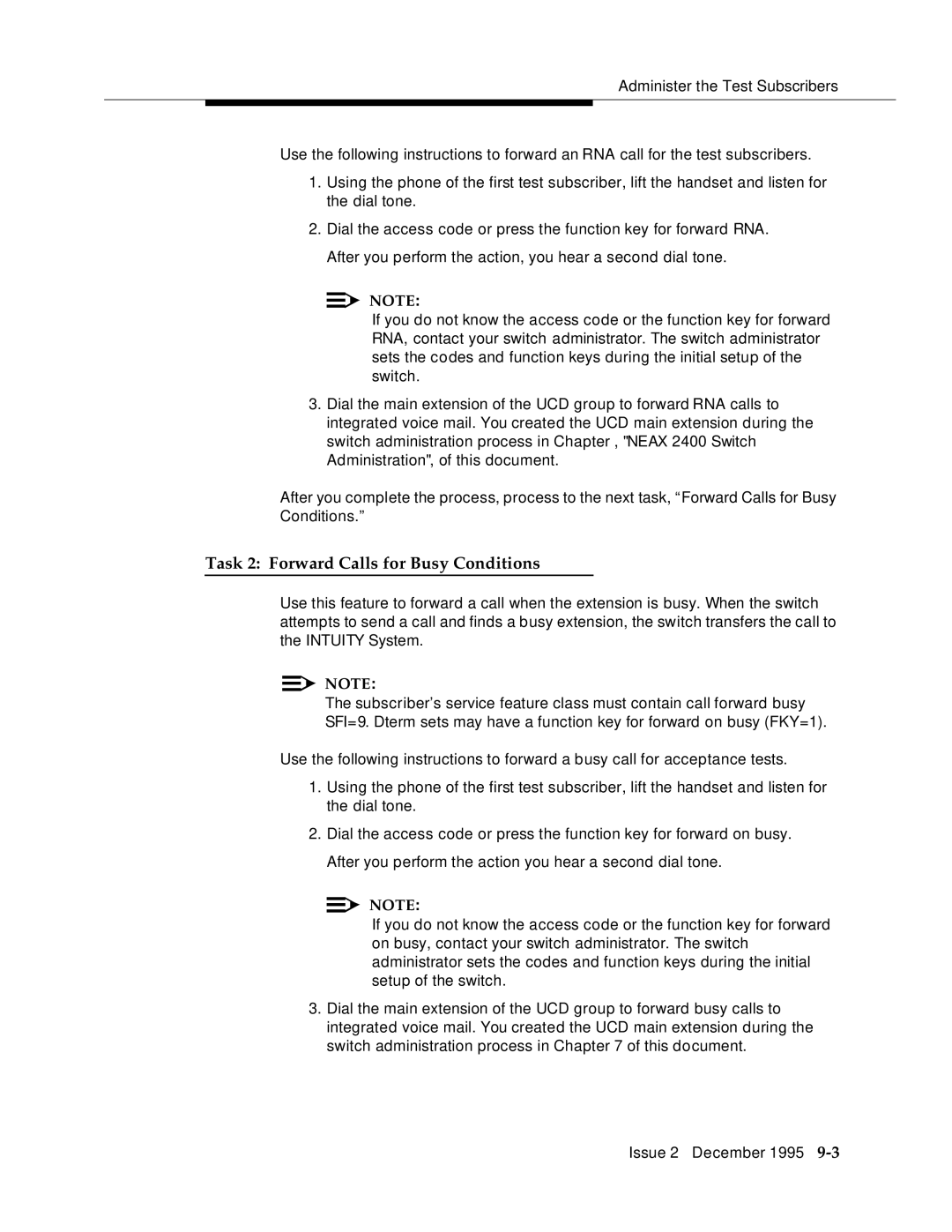
Administer the Test Subscribers
Use the following instructions to forward an RNA call for the test subscribers.
1.Using the phone of the first test subscriber, lift the handset and listen for the dial tone.
2.Dial the access code or press the function key for forward RNA. After you perform the action, you hear a second dial tone.
![]()
![]() NOTE:
NOTE:
If you do not know the access code or the function key for forward RNA, contact your switch administrator. The switch administrator sets the codes and function keys during the initial setup of the switch.
3.Dial the main extension of the UCD group to forward RNA calls to integrated voice mail. You created the UCD main extension during the switch administration process in Chapter , "NEAX 2400 Switch Administration", of this document.
After you complete the process, process to the next task, “Forward Calls for Busy Conditions.”
Task 2: Forward Calls for Busy Conditions
Use this feature to forward a call when the extension is busy. When the switch attempts to send a call and finds a busy extension, the switch transfers the call to the INTUITY System.
NOTE:
The subscriber’s service feature class must contain call forward busy SFI=9. Dterm sets may have a function key for forward on busy (FKY=1).
Use the following instructions to forward a busy call for acceptance tests.
1.Using the phone of the first test subscriber, lift the handset and listen for the dial tone.
2.Dial the access code or press the function key for forward on busy. After you perform the action you hear a second dial tone.
![]()
![]() NOTE:
NOTE:
If you do not know the access code or the function key for forward on busy, contact your switch administrator. The switch administrator sets the codes and function keys during the initial setup of the switch.
3.Dial the main extension of the UCD group to forward busy calls to integrated voice mail. You created the UCD main extension during the switch administration process in Chapter 7 of this document.
Issue 2 December 1995
